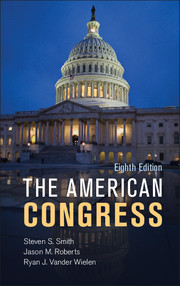Book contents
- Frontmatter
- Contents
- PREFACE
- Acknowledgments
- 1 The Troubled Congress
- 2 Representation and Lawmaking in Congress
- 3 Congressional Elections and Policy Alignments
- 4 Members, Goals, Resources, and Strategies
- 5 Parties and Leaders
- 6 The Standing Committees
- 7 The Rules of the Legislative Game
- 8 The Floor and Voting
- 9 Congress and the President
- 10 Congress and the Courts
- 11 Congress, Lobbyists, and Interest Groups
- 12 Congress and Budget Politics
- Appendix Introduction to the Spatial Theory of Legislating
- Index
PREFACE
- Frontmatter
- Contents
- PREFACE
- Acknowledgments
- 1 The Troubled Congress
- 2 Representation and Lawmaking in Congress
- 3 Congressional Elections and Policy Alignments
- 4 Members, Goals, Resources, and Strategies
- 5 Parties and Leaders
- 6 The Standing Committees
- 7 The Rules of the Legislative Game
- 8 The Floor and Voting
- 9 Congress and the President
- 10 Congress and the Courts
- 11 Congress, Lobbyists, and Interest Groups
- 12 Congress and Budget Politics
- Appendix Introduction to the Spatial Theory of Legislating
- Index
Summary
The American Congress has long been one of the most powerful legislative bodies in the world. Congress is now struggling with momentous issues such as health care, immigration, worldwide environmental problems, the stabilization of the world financial system, the rehabilitation of America’s infrastructure, funding the U.S. system of retirement security, the war against terrorism, the place of the United States in the post–Cold War world, and the federal budget. These issues present serious challenges. They affect the interests of all Americans, they are highly controversial, and they involve complex public policies.
MAJOR FEATURES OF THE AMERICAN CONGRESS
Understanding the Place of Congress in American Democracy. Our primary goal in writing this edition is to instill in students and general readers an appreciation for the importance of a strong legislature in the American democracy. Such an appreciation requires an understanding of the constitutional setting in which Congress operates, the basic rules of the electoral and legislative processes, and the resources and strategies of members of Congress and other key players. Each chapter is designed to contribute to the reader’s understanding by introducing key concepts, describing essential details of the process, and outlining general principles for understanding the subject.
- Type
- Chapter
- Information
- The American Congress , pp. vii - xPublisher: Cambridge University PressPrint publication year: 2013

